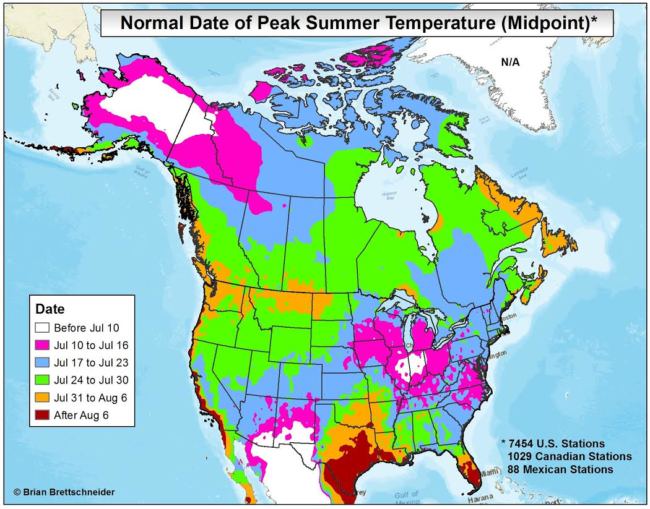
Alaskans may not have very warm temperatures to look forward to each summer, but the interior part of the state hits peak summer earlier than almost anywhere else in the country.
What the heck is peak summer? To answer that, we turned to Brian Brettschneider with the segment, Ask a Climatologist.
He says if you imagine a chart, it’s the top of the annual temperature curve, or the warmest part of the year.
Interview transcript:
Brian: In Alaska, in the interior part of the state, that can occur as soon as the first week of July. So places like Fairbanks and the central Interior, if you look at their annual temperature curve, they actually max out in the first part of July. And that’s unusual if you look at the rest of the United States and Canada; we really peak earlier than almost any other places. Maybe a few places in the desert Southwest might peak a little bit earlier, but in Alaska, summer hits you fast.
Annie: That’s kind of amazing, because you’d think that with the long winter here it would take a while for summer to get started. Why does summer happen earlier in Alaska?
Brian: There’s a couple of reasons. One is at our latitude, once we get into late May and June, especially in the Interior and farther north, there’s nearly 24 hours of daylight, so you end up with solar heating for most of the day. June and July are some of our least cloudy months, with the least amount of precipitation, so there are no clouds getting in the way. Whereas in say August, it’s very wet and very cloudy and the temperatures drop off quite dramatically, which is not the case in most of the rest of North America.
Annie: Does it matter that our summer is relatively short here?
Brian: There’s a lot of ways to define how long summer is and actually across much of Alaska, we kind of hang out near the high end of our annual temperature range for 120 or 130 days in many cases, which is comparable to many areas of the lower 48. So it’s not always a quick summer and then it tails right off. We spend a long time in a fairly warm and comfortable temperature range.
Annie: But not compared to many places in the lower 48
Brian: Well comfortable is a subjective term. I mentioned this is Interior Alaska. Along the coast, where there’s the influence of ocean water and there’s a thermal lag, it takes a long time to hit its summer maximum temperature. Along the coast the peak summer temperatures are a little bit later. So say in Anchorage, it’s mid to late July; Juneau, the last few days of July; and then if you go down to the Alaska Peninsula and Aleutian Islands where the water takes a really long time to warm up, now you’re looking into August where they have their peak temperatures. So it’s a proximity to water factor as well.
